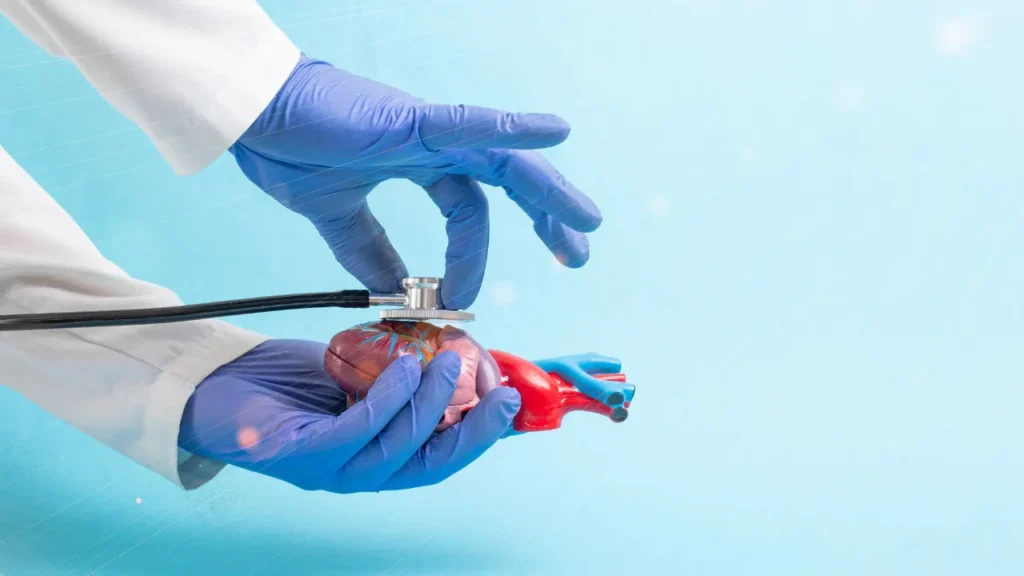Description
There is a non-genetic variant of Hemophilia known as Acquired Hemophilia. This type of hemophilia can appear at any stage of life. The illness is uncommon; it affects 1 to 4 people per million annually. The disease is characterized by an accumulation of autoantibodies, often referred to as inhibitors, that target the blood’s clotting factors, especially factor VIII. Because of its unforeseen and sometimes fatal bleeding is one of the consequences of having it, Acquired Hemophilia presents particular difficulties in diagnosis, administration, and therapy.
Spontaneous bleeding that occurs in the muscles, skin, and internal organs is a common symptom of Acquired Hemophilia. Unexpected bleeding from small wounds, severe bleeding after surgery or trauma, and unexplained bruises are also common signs. It is essential for you and anyone you know who has it to evaluate quickly and treat it to avoid serious repercussions because the severity and location of bleeding episodes may vary widely among people.
You May Also Like:
LIFECELL MUSCLE ANTI-AGING MUSCLE BUILDER REVIEWED: A LEADING PROTEIN SUPPLEMENT
YOUR BEST MUSCLE RECOVERY ALLY: FROG FUEL POWER PROTEIN VS. OPTIMUM NUTRITION GOLD STANDARD WHEY
Acquired Hemophilia: Description, Causes, And Treatment Protocol is an original (HealthXWire) article.
Possible Causes
Although there are a number of possible causes and related factors, the precise etiology of Acquired Hemophilia remains frequently unknown:
Medications:
A number of drugs can cause Acquired Hemophilia. Immune-modulating medications, like immune checkpoint inhibitors and interferons utilized to treat cancer, can activate an immune response that produces inhibitors of clotting factors.
Underlying Medical Conditions:
Many underlying medical disorders can coexist with Acquired Hemophilia. Acquired Hemophilia is associated with an elevated probability of autoimmune diseases like systemic lupus erythematosus and rheumatoid arthritis. Furthermore, the emergence of inhibitors has been linked to solid cancers, especially those of the lung, prostate, and ovaries.
Idiopathic:
Acquired Hemophilia is sometimes categorized by health specialists as idiopathic when the cause is unknown at the time of diagnosis and treatment. A sizable majority of instances of Hemophilia are caused by idiopathic acquisition, underscoring the disease’s complexity and the requirement for additional study to know its underlying causes.
Pregnancy and Postpartum Duration:
A pregnant woman or a new mother may develop Acquired Hemophilia. When a woman is pregnant, her hormones fluctuate and her immune system is more active, which may help her to develop inhibitors. The possibility of Acquired Hemophilia in both pregnant women and non-pregnant people must be noted.
Exacerbating and Mitigating Factors
Management and results for people with Acquired Hemophilia depend greatly on exacerbating and mitigating circumstances. The severity and frequency of bleeding episodes may be influenced by these variables. Optimizing treatment and avoiding problems requires an understanding of these aspects and appropriate action. These Acquired Hemophilia-related aggravating and alleviating factors are:
Exacerbating Factors:
Surgery:
Because prolonged bleeding is a possibility and clotting is difficult to control, surgical procedures might be difficult for those of you with Acquired Hemophilia. Planning and cooperation with the medical team are essential for surgical treatments, including dental procedures. To reduce the risk of bleeding, preoperative procedures, including ensuring that clotting factor levels are sufficient and using effective hemostatic techniques, are required.
Trauma:
In people with Acquired Hemophilia, physical trauma from incidents or wounds can start bleeding episodes. Excessive bleeding can result from even slight injuries, and each person’s level of bleeding and location of bleed will differ. For those who have Acquired Hemophilia, it is essential to take preventative measures to lower their chances of getting hurt and to get help right away if they do get hurt.
Pregnancy and Postpartum Span:
People with Acquired Hemophilia have a higher risk of bleeding during pregnancy and immediately following delivery. Pregnancy-related physiological requirements and hormonal fluctuations can affect coagulation factors and raise the risk of bleeding episodes. To guarantee a risk-free pregnancy and birth, a specialist healthcare team must be closely monitored and managed.
Infections:
In people with Acquired Hemophilia, infections can start or exacerbate bleeding episodes. During infection, inflammatory reactions and enhanced immune system activity can worsen inhibitor generation and further impair clotting function. To reduce the risk of consequences, preventive measures like vaccination and quick infection treatment are crucial.
Mitigating Factors:
In Acquired Hemophilia, the synthesis of inhibitors is frequently reduced by immunosuppressive medications like rituximab and corticosteroids. These drugs act by reducing the immune response, which can lessen the intensity and regularity of bleeding episodes. In order to balance the probable advantages and hazards of immunosuppressive medication, careful monitoring and control are required by patients and professionals.
Underlying Condition Monitoring:
The likelihood of bleeding episodes can decrease, and symptoms can lessen with effective therapy of underlying problems linked to Acquired Hemophilia, including autoimmune diseases or solid tumors. Stabilizing your immune system and lowering inhibitor production may be aided by treating the underlying illness.
Psychological and Emotional Support:
The emotional wellness and standard of living of a person can be significantly impacted by Acquired Hemophilia. Giving people psychological and emotional assistance through therapy, support networks, or other methods might help them manage the difficulties brought on by the disease. Managing stress and implementing healthy coping strategies can indirectly improve general health and may even lessen bleeding episodes brought about by anxiety or depression.

Standard Treatment Protocol
Controlling bleeding episodes, restoring normal clotting functioning, and eliminating inhibitors are the main targets of treatment for Acquired Hemophilia. Bypassing drugs and immunological tolerance induction (ITI), which consist of the following, make up the usual therapy procedure:
Bypassing Agents:
When Acquired Hemophiliacs using inhibitors against clotting variables experience bleeding episodes, bypassing medications are utilized to induce clotting and control them. The two principal bypassing mechanisms are as follows:
- Activated Prothrombin Complex Concentrates (aPCC)
Factor VIII is not necessary because aPCC contains active factors II, VII, IX, and X. When rFVIIa is unavailable or inappropriate, it may be used instead. It’s proven successful in controlling episodes of bleeding when administered intravenously.
- Recombinant Activated Factor VII (rFVIIa)
A synthetic version of factor VIIa called rFVIIa eliminates the requirement for factor VIII. By turning on the coagulation cascade later, it encourages clot formation. It effectively reduces bleeding from Acquired Hemophilia and is normally taken intravenously.
Immune Tolerance Induction (ITI):
ITI involves a protracted course of therapy meant to get rid of inhibitors and bring back healthy clotting. To promote immunological tolerance, it entails the routine administration of high dosages of clotting factors, often factor VIII concentrates. Clotting factor levels along with inhibitor titers must be closely monitored throughout ITI, which could extend for several months.


Treatment Options
Prescription drugs are used for treating acquired hemophilia as an alternative to the usual course of care. They consist of the following:
Prescription Medications:
These include:
- Antifibrinolytic Drugs
By preventing the disintegration of fibrin, antifibrinolytic medications like tranexamic acid can assist stabilizing the clotting of blood and lessen bleeding. These drugs are frequently combined to control bleeding events and enhance clot stability.
- Desmopressin
By allowing endothelial cells to release stored factor VIII, desmopressin, a synthetic antidiuretic hormone, may improve clotting performance. If a person has residual factor VIII action and Acquired Hemophilia, it might help them. Most commonly, desmopressin is injected into a vein or sprayed into the nose.
- Immunosuppressive Drugs
To minimize the generation of inhibitors and dampen the immune response, physicians may administer immunosuppressive medications like rituximab and corticosteroids like prednisone. To increase their effectiveness, these drugs are frequently taken in conjunction with ITI and bypassing agents.
Over-the-Counter (OTC) Formulations:
Acquired Hemophilia-related minor pain from bleeding episodes can be treated with over-the-counter painkillers like acetaminophen. To ensure that OTC drugs are not incompatible with prescribed therapies, it is crucial that you speak with a healthcare provider before utilizing any of these products.
Nutritional Supplements:
Even while dietary supplements are not used to cure Acquired Hemophilia, it is nonetheless crucial for people with bleeding disorders to maintain their general well-being and nutrition. Getting enough of the vital minerals you need, like iron, vitamin C, and vitamin K might promote healthy coagulation and encourage recovery.
Natural and Herbal Remedies:
There is scant scientific support for the utilization of herbal remedies and natural treatments as supplemental therapies for Acquired Hemophilia. Nevertheless, some compounds with possible anti-inflammatory advantages, such as curcumin and omega-3 fatty acids, which are present in fish oil, could contribute to decreasing swelling and perhaps even improve clotting function. In order to guarantee the safety, effectiveness, and avoidance of any potential drug interactions, it is essential to discuss the usage of these treatments with medical professionals.
Finally, it is crucial for you to remember that the management of Acquired Hemophilia ought to be carried out under the supervision of medical specialists skilled in addressing bleeding disorders and adapted to the unique requirements of each patient. For the best possible therapy results and to reduce problems, regular evaluation of clotting factor stages, inhibitor titers, and general health is necessary.


Conclusion:
Hemophilia is a disease that can be both congenital and non-congenital. This article was about Acquired Hemophilia, the non-congenital form of the disorder. The article reviewed the various known and unknown causes for it, as well as the current consensus regarding treatment. This is a disorder that can be treated with traditional forms of care, supportive care, OTC items, and nutritional supplements.
Treating the whole person is just as important in treating Acquired Hemophilia as it would be with any other disease. There are certain people with certain health conditions and lifestyle choices that are more susceptible to Acquired Hemophilia. In addition to treatment plans, patients with this disorder have to monitor physical contact closely, injuries, random, and especially excessive bleeds in order to stay safe.


References:
- “Acquired Hemophilia.” Retrieved from: https://rarediseases.org/rare-diseases/Acquired-Hemophilia/
- “Acquired Hemophilia.” Retrieved from: https://emedicine.medscape.com/article/211186-overview
- “Acquired Hemophilia.” Retrieved from: https://www.ncbi.nlm.nih.gov/books/NBK560494/
- “Acquired Hemophilia.” Retrieved from: https://rarediseases.info.nih.gov/diseases/10350/acquired-hemophilia
Important Note: The information contained in this article is for general informational purposes only, and should not be construed as health or medical advice, nor is it intended to diagnose, prevent, treat, or cure any disease or health condition. Before embarking on any diet, fitness regimen, or program of nutritional supplementation, it is advisable to consult your healthcare professional in order to determine its safety and probable efficacy in terms of your individual state of health.
Regarding Nutritional Supplements Or Other Non-Prescription Health Products: If any nutritional supplements or other non-prescription health products are mentioned in the foregoing article, any claims or statements made about them have not been evaluated by the U.S. Food and Drug Administration, and such nutritional supplements or other health products are not intended to diagnose, treat, cure, or prevent any disease.
Table of Contents


